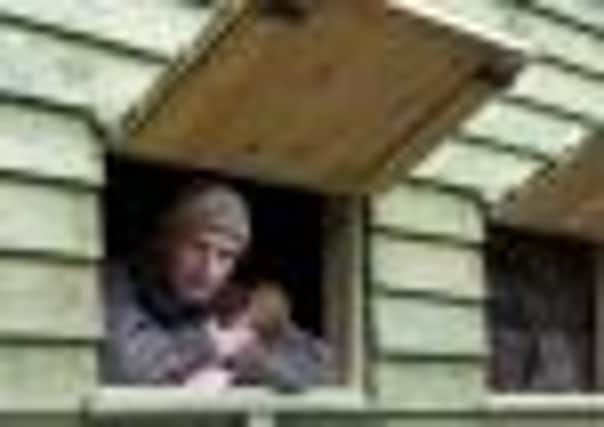Roll up, roll up for the red squirrel live show


The hide is also sure to attract as well other enthusiasts eager to observe all woodland wildlife at close quarters.
The relatively recent re-establishment of red squirrels in the western part of the Yorkshire Dales National Park has also saved Simon, a professional wildlife photographer, a packet.
Advertisement
Hide AdAdvertisement
Hide AdIt means he can work locally, rather than make expensive trips to Scotland to get red squirrels regularly in his camera viewfinder. It’s thanks to the conservation work of landowners such as Hugh Kemp in Widdale, that the long-term future of Yorkshire’s red squirrels is looking secure.
Earlier this year the Prince of Wales launched a new red squirrel conservation partnership called Red Squirrels Northern England (RSNE) whose work is mainly based in the Yorkshire Dales, north-west Durham, Cumbria, Northumberland, Merseyside, and Lancashire where 17 large plantation conifer forests have been designated as red squirrel santuaries.
Each reserve comprising approximately 200 hectares of woodland is surrounded by a 5km “buffer zone” to help give protection from encroaching grey squirrels.
Two of these “strongholds” are in North Yorkshire at Greenfield and Widdale.
Advertisement
Hide AdAdvertisement
Hide AdThe RSNE project works with a range of partners to control grey squirrels in the Stronghold forests and monitors bi-annually how far they are succeeding.
This work complements the efforts made by volunteer groups and private landowners throughout northern England.
Simon’s red squirrel photos have been used by Friends of the Earth and the RSPB on their Christmas cards. And one of his pictures was commended in last year’s British Wildlife Photography Awards.
Despite this pictorial coverage, Simon has found that few people from beyond the National Park know about the “Yorkshire Reds”.
Advertisement
Hide AdAdvertisement
Hide AdAnd this is what prompted him to set about identifying a secluded, private site which would allow others to visit and take photographs.
“Wildlife tourism is becoming increasingly popular in the UK,” says Simon. “However, despite the wealth of wildlife within the Dales there are very few all-weather viewing or photography facilities.”
Construction of a large hide to accommodate up to four photographers began last year.
It was a family affair but progress was slow due to the remoteness of the location and the heavy snow of last winter.
Advertisement
Hide AdAdvertisement
Hide Ad“All the individual pieces had to be carried several hundred metres uphill, over uneven ground, with up to six family members straining under their weight,” says Simon.
The red squirrel, Sciurus vulgaris, lives off seeds, buds, flowers, shoots, nuts, berries and fruit from many trees and shrubs. They also eat fungi and insects, and occasionally birds’ eggs. They can live to six years of age and can be be brown, almost black or quite grey. A squirrel’s nest, a drey, may be in a hole in the tree or set against the trunk and branches. Red squirrels are highly susceptible to the lethal squirrelpox virus
Simon’s hide been designed to make photography easy with a number of windows looking out onto feeding areas with natural perches.
It’s also a good spot for anyone who just wants to watch the squirrels feeding and playing just a few metres away.
Advertisement
Hide AdAdvertisement
Hide Ad“They are generally very reliable and so bold for wild animals,” he says. “Sometimes their antics can have you in stitches and they are more vocal than most people realise.
“It’s not just squirrels either, the surrounding woodland is full of life and you never know what you might see from the hide.”
Squirrel game of hide and seek
The hide and photography tuition workshops need to be pre-booked via Simon’s website www.wilddales.co.uk
His new photographic exhibition opens next Saturday at Country Harvest in Ingleton.
For RSNE enquiries, contact them care of Northumberland Wildlife Trust, Garden House, St Nicholas Park, Jubilee Road, Gosforth, Newcastle upon Tyne, NE3 3XT. Phone 0191 284 6884